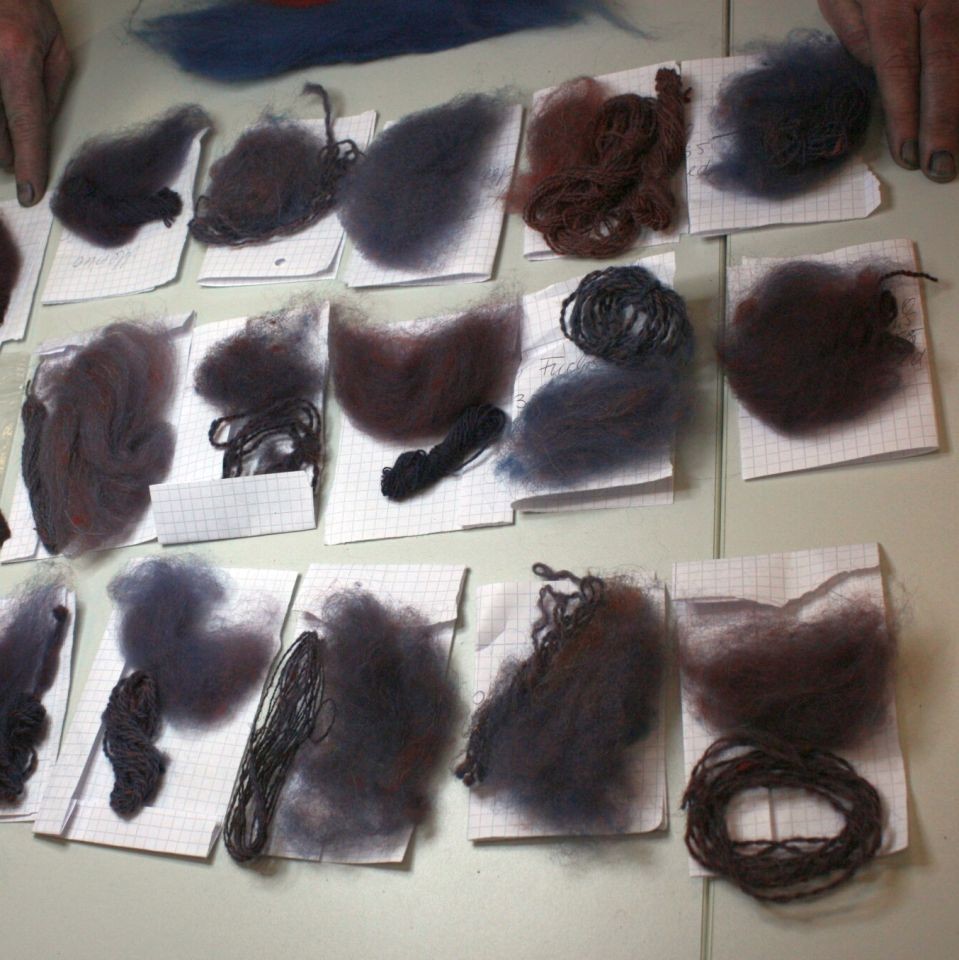Search the Blog
Latest Comments
Tales from Forum, Part 1
I am back, and I had a wonderful time at the Forum - with all the typical hustle and bustle and utter, complete and wonderful madness that this week brings.
We had threads and thread-making as the focus topic, which meant that there were lots and lots of things for me to load into the car and ferry to Mayen - from tools to heckle flax or hemp to all kinds of spindles and spinning tools, plus some other tools in case something needed cutting, sawing, drilling or sanding. (There was some drilling done, so these did come in handy.) There were nettles, and there was wool of all kinds, and some cotton, and as always, it was not enough time during the week to do all the things that I had hoped to do.
That does not mean, though, that there was only little done - on the contrary. We managed to really do a lot of things, with work going on from right after breakfast to long after dinner... spinning, splicing, and some other things as well.
Micky Schoelzke spent a lot of her time in the laboratory room, working on a large series of dye variations to explore fake purple - the imitation of true snail purple dye through the combination of blue (from woad) and red (from madder). Some of the tests were overdyeing, and some of the tests were dyeing fibre to later blend together in different combinations of shades and different ratios.
The blending was a lot of fun, with lots of people working together to weigh the fibres, then blend them, and then spin little samples for comparison. It also looks like blending fibres is much easier to do for achieving a purple-ish colour than the overdying method. The blend will result in a slightly speckled look of the finished product (as can also be seen on a few extant samples where this method was used), while the overdyeing gets a more even result that can come closer to the Real Thing. However, hitting the right colour when overdyeing is much harder than blending fibres together, especially since you can do a little sample with the blending and then adjust ratios rather easily, while overdyeing is much more fickle. Yes, you can do a test dye, but the time, effort, and resources required for that are much higher than to do a test blend or two.
There's still a lot to explore on this topic, and I'm looking forward to more on it. The comparative ease of the fibre blending opposed to the overdyeing is, however, an argument for dyeing something in the wool that I can readily accept - because I'd usually vote that dyeing something in the yarn, or in the fabric, makes more sense. Less felting (which will occur even if you are very careful with your fibre), less loss of dyed fibre, and the yarn needs to be wet-finished anyways so dyeing will take care of that as well... plus yarns are easier to handle than fibre is. But if you want to spin blends of colour, well, you have no choice but to dye in the fibre.
The other big experimental action of this year's Forum was making gilt membrane threads... and I will tell you a bit more about that tomorrow.




